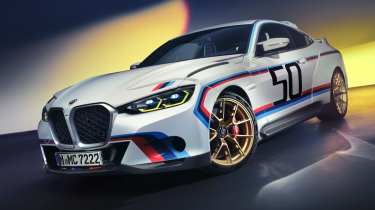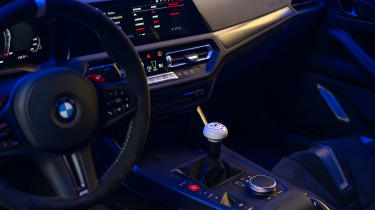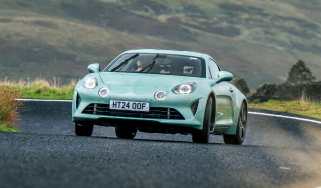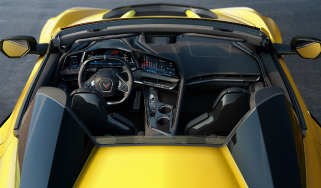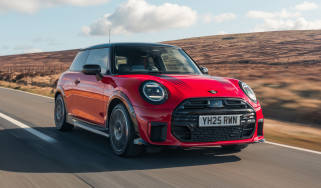New BMW 3.0 CSL revealed
Modern day homage to the 3.0 CSL ‘Batmobile’ packs 552bhp and a manual gearbox
The final hurrah of BMW M’s 50th anniversary celebrations has now been revealed with the highly bespoke and very exclusive BMW 3.0 CSL. Built in homage to BMW's original 3.0 CSL that was introduced in 1972 (itself as a homologation special), the new model channels its bespoke nature with a striking combination of technical and visual elements. Limited to 50 units, the CSL’s price has not been confirmed, but is expected to extend well into seven figures.
Starting under the new carbon skin, the 3.0 CSL is the most powerful six-cylinder BMW M model yet featuring an uprated version of the M4’s S58 turbocharged 3-litre in-line six, paired exclusively to a six-speed manual transmission. It’s capable of producing 552bhp, 10bhp more than the new M4 CSL and 49bhp more than you’ll find in a standard M4 Competition. Torque is a different story, however, as the six-speed manual has a lower torque cap, its 405lb ft considerably lower – one shared with the non-UK market base M4 and incoming M2.
To this, BMW M’s usual packet of hardware is applied – there’s an electronically-controlled BMW M rear differential, M Servotronic steering and clever 10-stage traction and stability control programs. The suspension layout is also familiar, so there’s double-joint spring struts up front and a five-link setup at the rear running electronically controlled dampers and standard steel springs.
The brakes are a carbon ceramic setup with 400mm discs on the front axle and 380mm discs at the rear. These sit behind unique, staggered 20- and 21-inch forged wheels with a lattice design within their spokes and are – for the first time on a BMW – centre-lock as you might find on a Porsche 911 GT3. These are wrapped in a bespoke Michelin Pilot Sport 4S tyre with ‘50’ insignias integrated into their sidewalls.
The bodywork is almost all bespoke, with carbonfibre making up a majority of the new parts including the front and rear bumpers, rear wing, bonnet, roof skin and bootlid. Perhaps most dramatically styled are the wheel arch extensions, which reference previous CSL homage concept cars from BMW’s recent past. The front wings are their own bespoke units, but the rear arch extensions sit over the top of an existing M4’s Coupe's side pressing, neatly integrating into the rear wing.
BMW has reinstated the rear window’s Hofmeister kink (and rightly so), sitting within a satin silver frame that follows the contour of a standard M4’s rear window opening. This does leave space to integrate BMW’s heritage roundel though – another reference to the 1972 original. The rear end is dominated by the two wings, one of the boot lid and one at the leading edge of the roof. These sit above a bespoke boot lid that displaces the numberplate to the lower bumper, where it sits above four round tail pipes integrated into the big rear diffuser.
Through the extensive use of carbonfibre and elements like the forged wheels, stripped out interior and a titanium exhaust silencer, a considerable amount of weight is expected to have been removed, although BMW has yet to give us a specific figure. They did, however, release a 2.9kg/hp power-to-weight ratio, which suggests a weight figure of 1624kg, 76kg lighter than the M4 CSL and around 100kg down on a standard M4 Competition. Using other BMW M models for context (ie. the M2), 25kg of this weight saving will have been derived through the use of the lighter manual transmission.
Each of the 50 units will be built by hand, each finished in BMW’s iconic livery. The livery itself is hand-applied with paint rather than stickers or decals, meaning that each component with a painted stripe requires a 134-step process to finish. This, together with the hand-built assembly, gives the 3.0 CSL a 10 day production sequence. It’ll take three months for BMW to complete the 50-unit build run.
BMW has not committed to a price, but has indicated that this will be an expensive model for its most auspicious of customers. This will give it a price tag that’s well into seven figures, likely making this the most expensive road-going BMW M model in its 50 year history.

